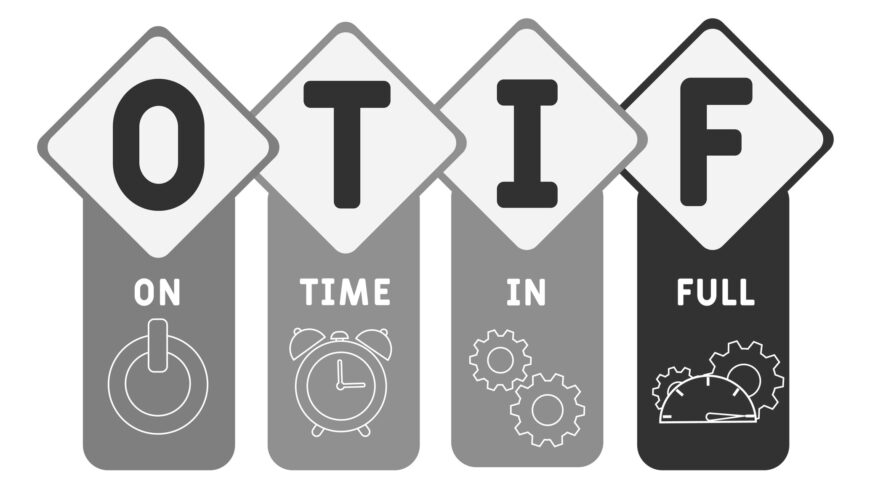For suppliers of a large retailers, OTIF thresholds are likely here to stay. For the past several years, suppliers to companies like Walmart and Kroger have dealt with the pressure to deliver their goods to the retailers “on time and in full” (OTIF). Kicking off around 2018, OTIF policies were a supply chain management tool used to keep up with Amazon as e-commerce grew. Once the pandemic hit, some OTIF policies became even stricter, as ecommerce exploded. However, Walmart has just become the first of these retailers to announce that it’s easing up on OTIF requirements, as supply and demand normalize post-pandemic.
When Walmart instituted its stricter OTIF policies in 2017, it required general merchandise suppliers to shift from hitting a two-day delivery window 75 percent to 95 percent of the time. Grocery suppliers had the same metric switch, except their delivery window was only one day. When suppliers missed the OTIF requirement, they faced fines or, in worse case scenarios, lost their contract with the retail giant.
Kroger had similar policies, charging suppliers $500 per day for deliveries made past a two-day window. The Food Marketing Institute estimated then that grocers lost $75 billion a year in sales—roughly 10 percent—due to out-of-stock and unsaleable goods.
In 2020, when pandemic sales surged, Walmart increased its OTIF requirements even more. At that point, the retailer required suppliers to meet delivery requirements 98 percent of the time, or face fines. Last week, it announced it would lower these requirements to be on time 90 percent of the time and in full 95 percent.
The news surely comes as a welcome relief to grocery suppliers who have struggled to meet the high OTIF thresholds. This is especially true of smaller suppliers, for whom upgrading systems costs have been high.
Larger suppliers, like Proctor & Gamble, have spent huge sums to upgrade software systems and increase visibility. Around the same time OTIF requirements shifted, P & G used what-if scenarios, while Unilever began adopting tools like concurrent planning processes. Both suppliers found they improved demand and supply analysis. With that capability, they could make quick supply chain changes to meet the demands of retail customers like Walmart and Kroger.
Concurrent planning solutions facilitate end-to-end connection and agility across the business supply chain. When synchronized at such a high level, suppliers can react to sudden changes and communicate them to carriers and warehouses. They can then notify the supply chain about potential delays and adjust to avoid them, if possible.
Despite Walmart’s easing of OTIF thresholds, if you’re a supplier to a large retailer, know that the thresholds are likely here to stay in one form or another. Work closely with your supply chain partners to ensure accurate forecasting, timely shipping, and collaborative visibility across the board. Supply chain management consultants can help you strategize, too, to avoid costly OTIF penalties today and in the future.


